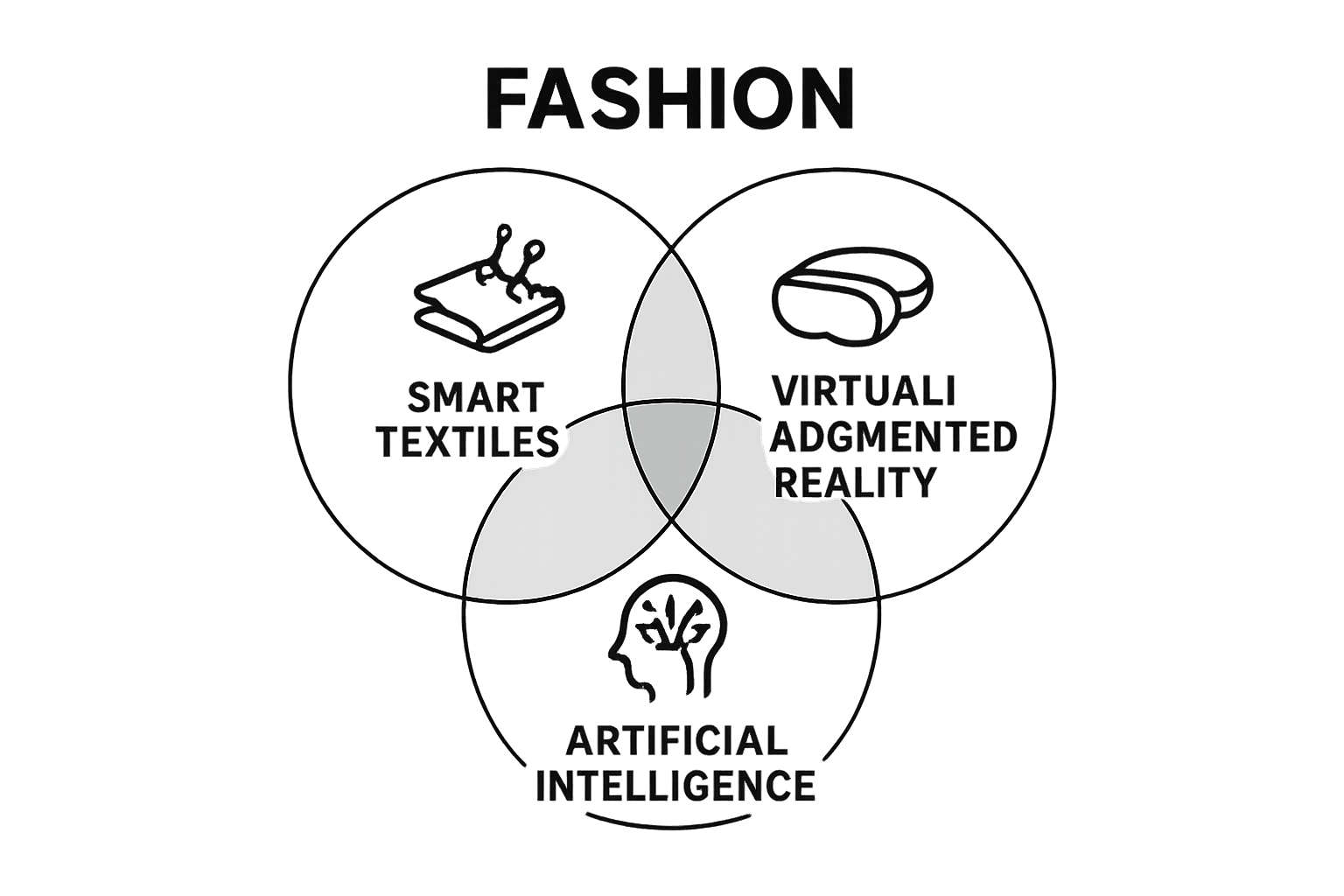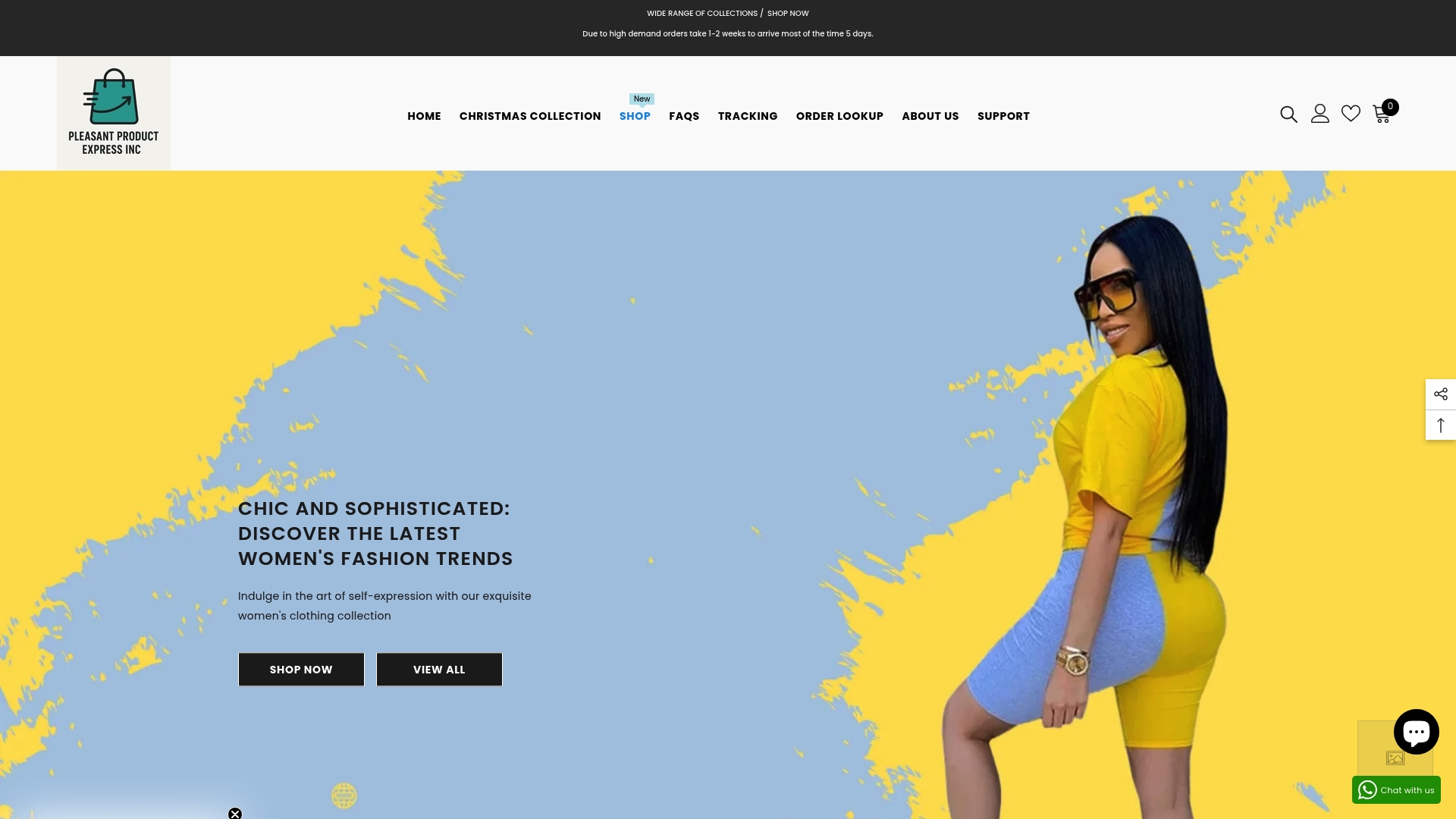What is Technology in Fashion? Understanding Its Impact

Fashion is changing faster than ever, and digital innovation is now woven into every thread of the industry. You might expect futuristic runways or high-tech fabrics to be rare, but over 60 percent of fashion companies now use AI-driven tools and smart textiles in their core operations. That sounds like high fashion only for the elite, but the biggest surprise is how much these technologies are shaping what regular shoppers pick, wear, and even experience every day.
Table of Contents
- Defining Technology In Fashion: An Overview
- The Importance Of Technology In Fashion Industry
- How Technology Transforms Fashion Design And Production
- Key Technologies Driving Change In Fashion Today
Quick Summary
| Takeaway | Explanation |
|---|---|
| Technology reshapes fashion industry | Cutting-edge innovations are transforming design, production, and consumer interactions in fashion. |
| Smart textiles enhance performance | Advanced fabrics integrate electronic components, enabling garments to monitor health and adapt to environmental changes. |
| AI optimizes fashion design and inventory | Machine learning analyzes data to predict trends and improve inventory management, making the design process more efficient. |
| Virtual reality enhances shopping experiences | Augmented and virtual reality create immersive environments for customers to try on and customize clothing virtually. |
| Sustainability through technology integration | Advanced tools help brands reduce waste, optimize supply chains, and implement ethical production practices. |
Defining Technology in Fashion: An Overview
Technology in fashion represents a dynamic intersection where cutting-edge digital innovations transform traditional design, production, and consumption processes. At its core, this emerging field combines technological advancements with creative expression, enabling designers and brands to reimagine how clothing and accessories are conceived, manufactured, and experienced.
The Technological Evolution of Fashion
The integration of technology into fashion goes far beyond simple digital design tools. According to research from the National Institutes of Health, Fourth Industrial Revolution technologies like robotics, 3D printing, virtual reality, and artificial intelligence are fundamentally reshaping the fashion industry. These innovations are creating unprecedented opportunities for:
- Enhanced production efficiency
- Reduced material waste
- More personalized design experiences
- Sustainable manufacturing practices
Practical Applications of Technology in Fashion
Modern fashion technology encompasses several key domains, transforming how we understand and interact with clothing. Designers now leverage advanced computer-aided design (CAD) systems to create intricate digital prototypes, significantly reducing design time and material consumption. Smart textiles and wearable technologies have emerged as groundbreaking categories, integrating sensors and electronic components directly into fabrics.
For those interested in exploring digital fashion further, check out our comprehensive guide on digital fashion to understand how technology is revolutionizing clothing design and consumption. The convergence of fashion and technology represents not just a trend, but a fundamental reimagining of how we conceptualize, create, and experience clothing in the 21st century.
To clarify the different ways technology is transforming the fashion industry, the following table summarizes key technological domains and their main applications in modern fashion.
| Technology Area | Main Application |
|---|---|
| Computer-Aided Design (CAD) | Enables intricate digital prototypes and reduces design time and material waste |
| Smart Textiles & Wearables | Integrates sensors into fabrics to monitor health and adapt to environments |
| Robotics & Automation | Improves efficiency in textile cutting, stitching, and quality control |
| 3D Printing | Creates complex textile structures and custom-fit garments |
| Artificial Intelligence (AI) | Predicts trends, optimizes inventory, personalizes recommendations |
| Virtual & Augmented Reality (VR/AR) | Provides immersive shopping, virtual fitting, and custom design experiences |
| Machine Learning for Sustainability | Optimizes supply chains and predicts demand for reduced waste and ethical production |
The Importance of Technology in Fashion Industry
Technology has transformed the fashion industry from a traditional craft-based sector into a dynamic, data-driven ecosystem that continuously pushes boundaries of creativity, efficiency, and sustainability. The integration of advanced technological solutions is no longer optional but essential for brands seeking to remain competitive and relevant in an increasingly digital marketplace.
This table highlights how advanced technologies are driving positive change in the fashion industry by improving efficiency, supporting sustainability, and enhancing consumer experiences.
| Impact Area | Role of Technology | Example Application |
|---|---|---|
| Innovation & Efficiency | Streamlines design, inventory, and production planning | Automation, CAD, AI-powered planning |
| Sustainability | Reduces waste and supports ethical production practices | AI demand prediction, digital supply chain tools |
| Consumer Experience | Creates immersive and personalized interactions with products | Augmented reality fitting rooms, virtual showrooms |
| Personalization | Customizes clothing and recommendations for individual preferences | AI-powered suggestion engines, interactive design |
| Performance & Functionality | Enhances garment utility through advanced materials and embedded tech | Smart fabrics that monitor health or change behavior |
Driving Innovation and Efficiency
According to research from McKinsey, technological innovations are fundamentally restructuring how fashion businesses operate. These technological interventions enable companies to streamline complex processes such as:
- Design conceptualization
- Inventory management
- Production planning
- Customer experience personalization
Sustainability and Ethical Production
Technology plays a critical role in addressing the fashion industry’s environmental challenges. Advanced digital tools help brands reduce material waste, optimize supply chains, and implement more transparent production practices. Artificial intelligence and machine learning algorithms now predict demand more accurately, preventing overproduction and minimizing environmental impact.
Consumer Experience Transformation
Digital technologies are revolutionizing how consumers interact with fashion. Augmented reality fitting rooms, virtual fashion shows, and personalized recommendation systems are creating immersive shopping experiences that bridge physical and digital realms.
 Learn more about evolving fashion trends and style cycles to understand how technology continues to reshape consumer expectations and engagement in the fashion industry.
Learn more about evolving fashion trends and style cycles to understand how technology continues to reshape consumer expectations and engagement in the fashion industry.
How Technology Transforms Fashion Design and Production
Technology has become a revolutionary force in fashion design and production, fundamentally reimagining how clothing is conceived, developed, and manufactured. This digital transformation goes beyond mere technical enhancement, representing a comprehensive shift in creative processes and industrial approaches.
Digital Design and Prototyping
Computer-aided design (CAD) technologies have dramatically revolutionized the fashion design landscape. According to research from engineering experts, designers now leverage advanced software to create intricate digital prototypes with unprecedented precision and speed. These digital tools enable designers to:
- Experiment with complex patterns
- Simulate fabric behaviors
- Reduce material waste during initial design stages
- Collaborate remotely with global design teams
Advanced Manufacturing Techniques
Smart manufacturing technologies are transforming production processes, introducing unprecedented levels of efficiency and customization. Robotics and automated systems now handle complex textile cutting, stitching, and quality control tasks with remarkable accuracy. 3D printing technologies have emerged as groundbreaking tools, allowing designers to create intricate textile structures and custom-fit garments that were previously impossible to manufacture.
Personalization and Consumer Interaction
Digital technologies are bridging the gap between designers and consumers, creating more interactive and personalized fashion experiences. Augmented reality fitting rooms and AI-powered recommendation systems enable customers to visualize and customize clothing like never before. Discover more about the evolving role of fashion influencers in this technological transformation, as they play a crucial role in showcasing and popularizing these innovative design approaches. The future of fashion design is not just about creating clothing, but about crafting personalized, technologically enhanced experiences that resonate with individual consumer preferences.
Key Technologies Driving Change in Fashion Today
The fashion industry is experiencing a profound technological revolution, with cutting-edge innovations transforming every aspect of design, production, and consumer interaction. These technological advancements are not just incremental improvements, but fundamental reimaginings of how fashion is created, experienced, and consumed.
Smart Textiles and Wearable Technologies
According to research from the National Institutes of Health, smart textile technologies are pushing the boundaries of traditional clothing design. These advanced materials integrate electronic components and sensors directly into fabrics, creating garments that can:
- Monitor physiological health metrics
- Adapt to environmental temperature changes
- Change color or pattern dynamically
- Provide enhanced performance capabilities
Artificial Intelligence and Predictive Design
Artificial intelligence has emerged as a transformative force in fashion technology. Machine learning algorithms now analyze vast amounts of consumer data, trend information, and design parameters to predict fashion trends, optimize inventory management, and create personalized design recommendations. These AI systems can generate design concepts, predict consumer preferences, and even suggest modifications to existing designs with remarkable accuracy.
Virtual and Augmented Reality Experiences
Digital simulation technologies are revolutionizing how consumers interact with fashion. Virtual and augmented reality platforms enable immersive shopping experiences where customers can:
- Try on clothing virtually
- Customize garment designs in real-time
- Explore digital fashion collections
- Participate in interactive fashion shows
Explore our comprehensive guide on digital fashion to understand how these emerging technologies are creating entirely new paradigms of fashion consumption and design. The future of fashion is not just about clothing, but about creating dynamic, interactive, and personalized experiences that merge technology and creative expression.

Discover the Future of Fashion Shopping With Pleasant Product Express
You have just learned how technology is transforming the fashion world, from smarter manufacturing to more personal design. Maybe you wonder how to enjoy these advances in your own life. Does shopping for stylish clothing sometimes feel outdated or overwhelming? Are you searching for products that save you time and offer the comfort you need in today’s fast-paced world? Our mission at Pleasant Product Express is to help you experience the latest trends in fashion and technology without the hassle.

With our smooth, convenient platform you can explore an ever-growing collection of men’s, women’s, and baby clothing along with innovative gadgets for your home. Our dedication to quality and affordability means you always find something new and useful. Ready to see how style and technology come together online? Start shopping today at Pleasant Product Express INC and upgrade your lifestyle now. For a deeper look at digital clothing trends, check out our comprehensive guide on digital fashion. Experience next-level comfort and confidence—visit Pleasant Product Express to get started.
Frequently Asked Questions
What role does technology play in fashion design?
Technology has revolutionized fashion design by introducing advanced tools like computer-aided design (CAD) systems, allowing designers to create intricate digital prototypes efficiently. This reduces waste and enhances creativity in the design process.
How is artificial intelligence used in the fashion industry?
Artificial intelligence is applied in the fashion industry to analyze consumer data, predict trends, optimize inventory management, and create personalized design recommendations, ultimately enhancing the customer experience and streamlining operations.
What are smart textiles, and how do they impact clothing?
Smart textiles are advanced materials that incorporate sensors and electronic components. They enable garments to monitor health metrics, adapt to environmental changes, and provide enhanced performance, transforming the functionality of clothing beyond traditional uses.
How does technology contribute to sustainable fashion practices?
Technology aids in sustainable fashion by optimizing supply chains, reducing material waste, and implementing more transparent production practices. Tools like AI help brands predict demand accurately, thereby minimizing overproduction and its environmental impact.







